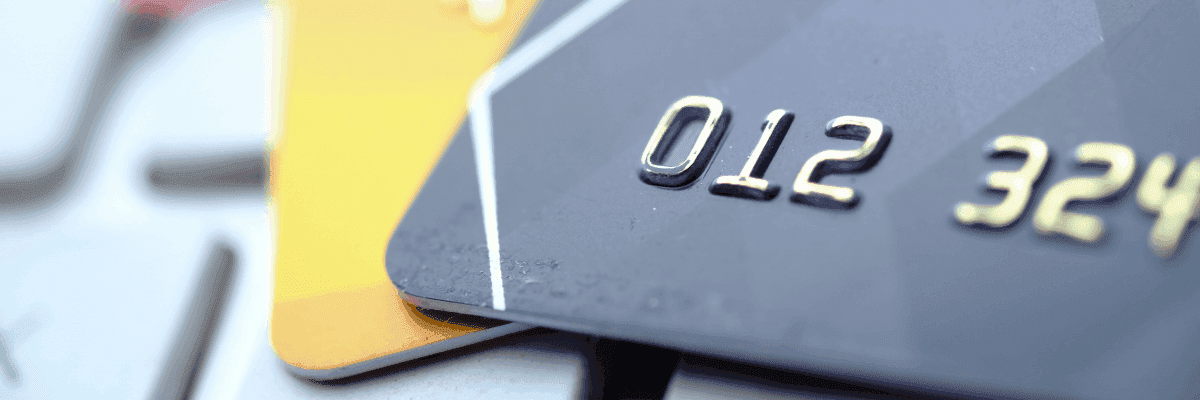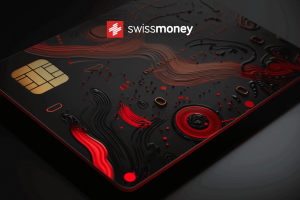In a rapidly evolving digital landscape, financial security takes center stage. With this in mind, have you ever contemplated whether you can track a bank card or experienced the anxiety of a stolen credit card? If yes, you may want to know how to safeguard yourself from fraudulent purchases.
This article will uncover the intricacies of card tracking, revealing what you can and cannot do in unfortunate situations related to modern banking technology.
Tracking debit card location – is it possible?
Unfortunately, you cannot track the physical location of your lost or stolen card like you would with a GPS-enabled device, as they lack GPS technology. Following the physical location of a credit card is not possible for privacy reasons.
However, you can monitor transaction history through your bank or app to review recent payments. Additionally, some banks offer delivery tracking for new credit and debit cards.
Can the bank or card issuer find your debit card?
It’s a common misconception that your bank can track a missing debit or credit card. Banks can only locate the merchant of the last transactions, not the card itself. Debit and credit cards don’t have built-in tracking technology.
In cases of lost or stolen debit cards, getting a new card is often a safer choice since the card’s information may have become compromised. Always report missing cards promptly to prevent liability for fraudulent charges.
Smart chips
To begin with, the smart chip, also known as an EMV chip, enhances transaction security and protects card information from theft making fraudulent purchases. EMV stands for Europay, Mastercard, and Visa.
Unlike the old magnetic strip that exposed card data during each purchase, the smart chip generates a unique cryptogram for every transaction, adding a layer of security.
EMV technology is used in-store by inserting it into an EMV-enabled terminal or through contactless methods like tapping or waving.
These single-use codes cannot be traced back to your account, making it difficult for thieves to copy your debit card information. However, it’s impossible to track the physical card itself because new codes are generated for each sale.
If you want to upgrade to a debit or credit card with a smart chip, contact your bank or financial institution. Numerous firms support and have incorporated EVM chips into the front of Discover, American Express, UnionPay, and other debit cards.
Can you track a debit card with a chip?
The EMV or smart chip increases safety and reduces the likelihood of fraud. Nevertheless, it won’t help you find a missing or stolen debit card because it lacks GPS or other location-tracking capabilities.
Visa card mobile location confirmation
While other methods may disappoint you, here is the good news. Visa’s Visa Mobile Location Confirmation app enables your bank to track your location using your phone’s GPS or network-based cell tower triangulation.
This feature ensures that your card is used in the same location as your phone, preventing account holds when making transactions in new or unfamiliar places.
However, it requires constant location sharing and having your phone with you during transactions, which may raise privacy concerns for some.
Mobile location confirmation is a security measure offered by many banks. It tracks your phone’s location daily and alerts you if it strays from your registered home address.
Unauthorized purchases are declined if your phone is detected outside this designated range. While it doesn’t guarantee protection against all fraud, it enhances debit card security conveniently.
What to do if you lose your debit card?
Take immediate action to secure your funds if you lost your debit card or it was stolen.
Freeze your debit card
Freezing or locking your debit card is one efficient method. When you lock your debit card, your account is marked as high-risk, making it more challenging for fraudsters to make unauthorized purchases with your card.
In addition, a frozen debit card cannot be used to make transactions or withdrawals from ATMs. If your card ever becomes lost or stolen, you can stop any further charges until you can unfreeze it.
It is a particularly great option if you think that you’ll be able to find it soon.
Keep an eye on your debit card usage
You can minimize the risk of payment card fraud by practicing caution and implementing secure payment card procedures.
Monitoring paper statements plays a pivotal role in detecting any potential card fraud. By diligently reviewing these statements, we can identify and address fraudulent activities before they escalate.
In addition to scrutinizing paper statements, taking proactive measures such as signing up for smartphone notifications can significantly enhance debit card tracking.
These notifications can alert us to any unusual or unauthorized transactions in real time, allowing for swift action to prevent further fraud.
Maintaining a vigilant stance when it comes to monitoring our transactions is crucial for safeguarding our financial assets and personal information.
Contact your bank immediately
If you can’t find your debit or credit card, the safest action is to contact your bank without delay. Most banks offer 24/7 customer service lines.
Waiting for unauthorized charges to appear is not recommended as it could lead to liability issues. Therefore, canceling the card and ordering a new one with a different number helps safeguard your finances from fraud.
When reporting a lost or stolen debit card, your bank can promptly cancel the card and issue a replacement with a new number to protect your financial data.
Moreover, if you use online banking, you might have the option to track the card in real time, expediting the cancellation process.
Update account authorization settings
One strategy to protect yourself against debit card fraud is to modify your account authorization settings. In this way, you may limit the purchases you can make or withdraw cash from ATMs using your card.
There are several options for customizing your debit card’s authorization settings. The first choice is to use your debit or credit card issuer or bank account. It is typically the simplest and most efficient.
The other option is to utilize a debit card authorization service, which employs advanced technological measures to track your purchases and protect you from fraud.
Use a mobile wallet or a virtual card
The physical card can be lost or stolen. However, you can avoid all this by choosing a more secure payment method: a virtual card, a mobile wallet, or both.
Like physical cards, virtual ones are accepted anywhere VISA is accepted and are included at no extra cost with every personal and joint checking account. Each card has its number, CVV code, and expiration date.
Moreover, you can always add your physical or virtual debit card to a mobile wallet. For example, if you are an iPhone user, you can add your cards to an Apple Wallet and use Apple Pay whenever you need it.
Also, many financial service providers offer their mobile apps for your convenience. One of them is swissmoney.
The swissmoney mobile app boasts a user-friendly interface. It allows you to effortlessly manage your card and store digital assets in multiple currencies.
One of the app’s notable features is its ability to facilitate swift and secure currency exchanges.
Whether you’re converting funds for travel or investment purposes, swissmoney ensures that the process is quick and safeguarded against potential security threats.
Moreover, swissmoney’s prepaid card is your gateway to a world of hassle-free online shopping. It provides a secure environment for making purchases on the web, giving you peace of mind during your virtual shopping sprees.
Additionally, the card ensures smooth and secure transactions in Euros in physical stores, making it a versatile and dependable payment method for everyday needs.
What sets swissmoney apart is its unwavering commitment to delivering a top-notch Swiss-quality experience to its users. Switzerland is renowned for its reputation for precision and excellence, and swissmoney proudly upholds this tradition.
FAQ
How do I find my lost debit card?
Unfortunately, there is no one effective way to find a lost card. If you notice that your card is lost or stolen, take the necessary steps to ensure the safety of your funds.
Can you track someone if they use your debit card?
Most of the time, the bank will be able to track down the person who uses your card. They may view the time, place, and merchant who processed the transaction.
Additionally, they might perhaps obtain the IP address of the device that was used to complete the transaction.
However, the bank may not always be able to determine who made a purchase using your debit card. If, for instance, a customer purchases in person, the bank might not know the name of the store or the device’s Internet Protocol address.
The bank also might be unable to identify who purchased if the card was stolen and used.
How do I check where my card is being used?
Indeed, you can’t precisely track the physical location of a lost debit card. However, you can still gather valuable information that may assist you in determining whether the card was stolen or misplaced.
One essential resource at your disposal is your bank or banking app. It can provide insight into the recent activity associated with your card.
Here’s what you can do:
- Check transactions: Use your bank’s online or mobile banking service to see your recent card transactions.
- Check the date and location: Pay close attention to the dates and locations of these transactions. This information can be valuable in assessing whether someone stole your card.
- Secure your card: If you suspect theft, your bank may suggest temporarily blocking or freezing your card to prevent more unauthorized charges.
- Report to the Police: If you think your card was stolen and used without permission, consider filing a police report. This official report can be helpful for your bank’s fraud investigation.
Read more


